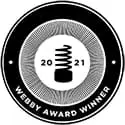Political Participation & Disability, featuring Alice Wong

Transcript
[Alice Wong, an Asian American woman in a wheelchair, sits for an interview in an industrial studio. She is wearing a patterned blouse and dark trousers as well as a mask attached to a tube that helps her breathe.]
ALICE WONG: All people need to be able to exercise their right to speak out, their right to vote, their right to make their voices heard. Oftentimes, physical barriers, attitudinal barriers, and policy barriers really prevent people with disabilities to be full participants in our society.
[on-screen graphic: Political Participation & Disability]
WONG: My name is Alice Wong.
There are still a lot of barriers people with disabilities face in political participation. For example, in 2012, over 30 percent of people with disabilities reported difficulty voting compared to 8 percent of nondisabled people.
People with disabilities are still facing numerous barriers, whether it’s at the polling station, whether it’s filling out absentee ballots, or whether they’re even allowed to vote—because there are people with intellectual and developmental disabilities, many of whom are under guardianship for various reasons. Many judges bar people under guardianship from voting, and I think that’s another huge human rights issue. They may need assistance with decision making, but that doesn’t mean they don’t have an idea of who they want to vote for or a desire to vote for somebody.
People with disabilities have a voice, whether it’s an actual literal voice or not. People have thoughts. People have desires. People want to be involved. That’s the work that needs to be done.
[on-screen graphic: There Is No Justice without Disability]
Accessibility Statement
- All videos produced by the Ford Foundation since 2020 include captions and downloadable transcripts. For videos where visuals require additional understanding, we offer audio-described versions.
- We are continuing to make videos produced prior to 2020 accessible.
- Videos from third-party sources (those not produced by the Ford Foundation) may not have captions, accessible transcripts, or audio descriptions.
- To improve accessibility beyond our site, we’ve created a free video accessibility WordPress plug-in.
Alice Wong is the founder and director of the Disability Visibility Project, a Ford grantee working to create and amplify disability culture and media. As a co-partner of #CripTheVote, a nonpartisan online movement encouraging the political participation of disabled people, she talks about the barriers people with disabilities face in the voting process.
“People with disabilities are still facing numerous barriers, whether it’s at the polling station, whether it’s filling out absentee ballots, or whether they’re even allowed to vote.”
In the United States, one in five eligible voters has a disability. To ensure their right to vote is protected, the Americans with Disabilities Act requires that voter registration and voting be accessible. Despite this, there are still a lot of obstacles people with disabilities face in political participation.
These barriers are physical, logistical, technical and legal. An estimated 1.5 million adults are under legal guardianship nationwide and, according to local and state rules, many of these adults, despite wanting to participate in civic life, are not able to vote.
It is the duty of America’s democratic system to end this institutionalized discrimination against people with disabilities and focus on ensuring that all citizens are part of the democratic process.
Resources
Want to learn more about these barriers and how you can work with the disability community to eliminate them?
- Watch Voting Rights for All an event hosted by The Ford Foundation with disability justice leaders, Imani Barbarin, Michelle Bishop and Bianca Laureano. Learn about what is at stake in 2020, how disability organizations, communities and philanthropy can collaborate, and what long-term actions need to be taken to ensure people with disabilities of their fundamental right to vote.
- Listen to this podcast from the Disability Visibility Project, showcasing two voices from the disability community on what political participation means to them.
- Read this article from Pew Charitable Trusts outlining which states eliminate the right to vote for people under guardianship. And this article, which illustrates some of the ways in which voters with disabilities are blocked from the ballot box.
- Read a report from the Ruderman Family Foundation on Voting Accessibility for People with Disabilities.
- Explore a number of fact sheets from Rutgers University on Disability and Voter Turnout.
- Work with Alice Wong, who offers a range of research and consultation services centered on people with disabilities.
This piece is part of Disability Demands Justice, a dynamic, ever-evolving hub to deepen our understanding of how disability intersects with social justice.
Explore the stories
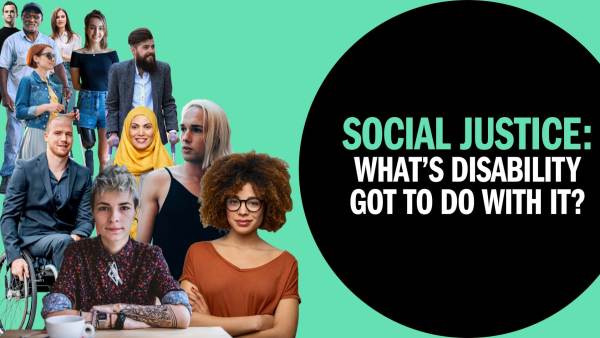
Social Justice: What’s disability got to do with it?
A society cannot be truly just without including people with disabilities and taking an intersectional approach towards tackling discrimination. This starts with inclusive leadership, where people with disabilities are invited into discussions and lead the way in advocating for inclusive, equitable spaces.
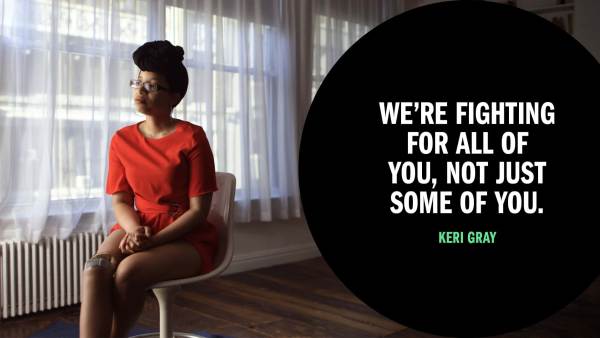
Intersectionality & Disability, featuring Keri Gray, the Keri Gray Group
Around the globe, people living with disabilities experience inequality in all its forms. Understanding intersectionality is essential to true inclusion. By centering those most marginalized and taking an intersectional approach in designing solutions, we can advance justice for all.
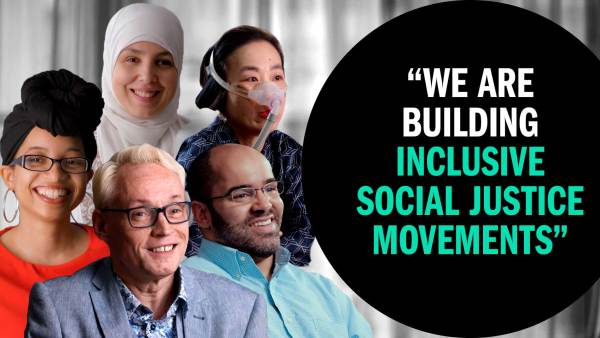
There is no justice without disability
Over one billion people in the world are living with a disability. We need to expand our definition of justice. To create a truly inclusive world, we need to recognize how disability intersects with issues of social justice. Racial justice, economic justice, and gender justice cannot exist without disability justice.
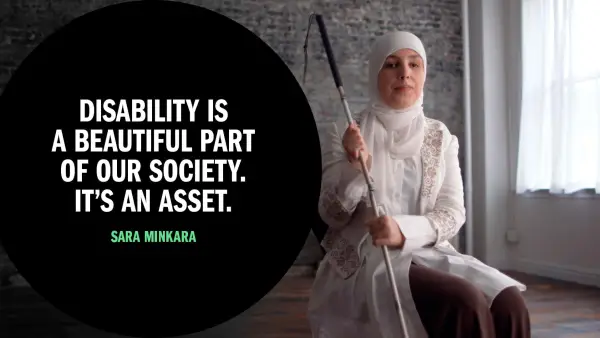
Disability Is an Asset, featuring Sara Minkara, Empowerment Through Integration
People with disabilities are the world’s largest marginalized population. Challenging discriminatory narratives and systems can help the disability community build power and create a more inclusive world, by contributing value across all sectors. Building a more inclusive world benefits everyone.
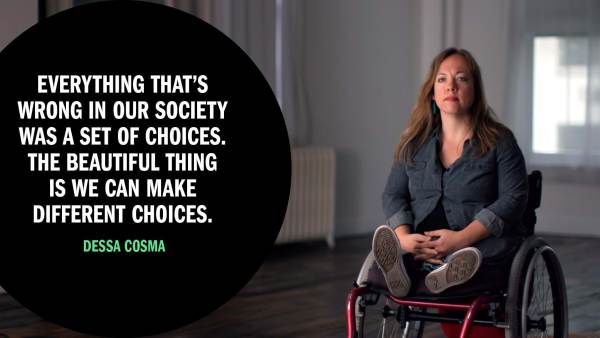
Economic Justice & Disability, featuring Dessa Cosma, Detroit Disability Power
Disability inclusion needs to be included in the fight for economic justice. Barriers to education and employment keep people with disabilities living in poverty. Ending poverty means addressing the drivers of economic inequality and reimagining the future of work.
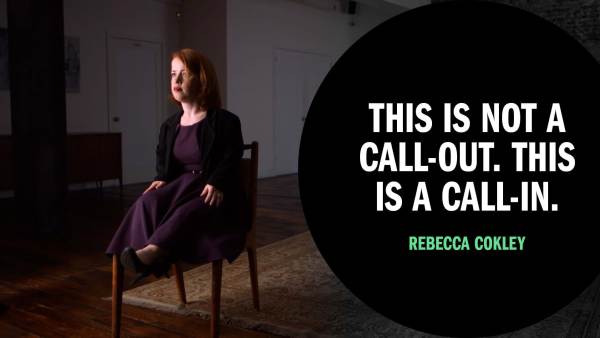
Your Values & Disability, featuring Rebecca Cokley, Center for American Progress
Disability needs to be included in the work of social justice. Through a commitment to diversity, equity and inclusion, and establishing organizational policies and practices, we can address challenges to accessibility and create an inclusive future.
